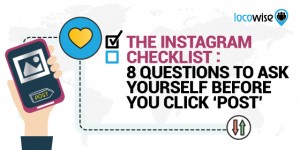August 26, 2016

If you want to talk about an explosion of proportions not seen since the industrial revolution, simply take a peek at the freelance economy.
Expansion of the freelance economy is growing at exponential rates evidenced by 53 million freelancers representing more than 33% of America’s labor force today. By the year 2020, this number is expected to grow by 50%. That is a significant amount of the workforce in a work-for-hire demographic poised to change business as we know it. While not all freelancers will be full-time independent contractors, they will be part of the fast gig group providing on-demand services from remote offices. These remote warriors may be found behind a desk, at a coffee shop, in a tree top or at the beach because the location simply doesn’t matter. The lifestyle does. Where else can you choose to wear pajamas, sweat pants or a power suit?
The draw here is that freelancers have the opportunity to maintain independence, generate income and enjoy a better work-life balance – all from the comfort of their own “office”. I’ve been in the business since 2002 and have never looked back.
Who Benefits from the Freelance Economy?
The rise of a freelance nation provides a multitude of lifestyle benefits, but it isn’t just advantageous for the worker. The employer and other business owners who “hire” the qualified contractors REDUCE overhead and expenses by NOT paying for benefits, office space, supplies, health/workers insurance, paid vacation/sick time, or training. It is an excellent opportunity to source high level expertise, leverage costs, and hire for work on a project basis. Since most freelancers work on an hourly or fixed rate billing system, employers eliminate the need to carry full time employees through non-project time slots.
The real-time freelance statistics speak for themselves – a way of life has emerged that is changing the landscape of how business gets done.
Hiring independent professionals, virtual assistants included of course, offers employers a workforce with an increased knowledge base, deep experience and refined skill-sets. Much like a veritable shopping cart full of tools, the mobile assets available and varied technological advances have set the stage for enhanced productivity without the confines of an office. Anyone has the ability to provide needed services without being hindered by geographical boundaries or of a lack of equipment. It’s pretty incredible to think about how far we’ve advanced over the last few decades, no longer being tethered to an office and a time clock.
The Freelance Economy: Business Tools for Success
Being fortunate to work remotely does require you to learn or become familiar with a variety of tools, platforms and apps in order to maintain your autonomy and earn a living. It may seem like a challenge at first, but without them, business as usual can be incredibly difficult. I for one, am not ready to trade in my mobility for a desk because the lifestyle win over-rides the investment in personal development.
Let’s jump into some of the key tools that have contributed to my success, connected me with remote organizations and given me the freedom I crave.
Project Management (PM): Operating a business takes dedication and organization. As a freelancer, you are building your personal business and the tools are the face of your brand.
Redbooth is my go to program for PM. It streamlines all communications, tasks, projects, accountability, files and timelines. Here’s the overview of their features. It is very user friendly and simple to set up. Give it a try. I was NOT partial to Basecamp or Trello.
Communications: In my experience, I find it best to have some fall backs to bring to the table, but more importantly, what technology is your client most comfortable using? Additional features of some of the tools below include secure SSL encryption, file transfers, group and private chats, easy screen sharing, and sync’d mobile capabilities.
I don’t have a preferred platform but I use HipChat, Slack, SKYPE and of course good old fashioned text, email and phone. If you’re needing a conference bridge check out UberConference or FreeConferenceCalling both for ease of use, recording options, and clarity.
Organization: Get your ducks in a row or you will be shaking those tail feathers pretty quickly. Showing the client how organized you are will build confidence and trust.
In addition to using Redbooth, I also like to employ the good graces of Google Drive and Dropbox for cloud storage and sharing documents with clients. Another extremely helpful tip (which came from a client) is to create Chrome user profiles with individual tabs and bookmarks. I cannot say enough about this Chrome feature. The seperate profiles enable me to have each clients’ social accounts, Chrome extensions, industry specific bookmarks and profiles in their own browser space. This is one of my all time organizational favorites.
This last tool, If This Than That, is a free service of 347 channels with “recipes” to help optimize your business, your life and your content. You create triggers “if this” happens “than that”, the action, pushes the data to your desired channel. For example you can create a recipes to:
- Push RSS feeds to Twitter, Facebook, LinkedIn or Buffer
- Receive a text message, email or phone call when a particular hashtag is posted
- Have Facebook or Instagram images sent to Dropbox
- Receive a text message if there is a forecast for rain
- Star a Gmail and have it delivered to Evernote
Being organized is a key tune up for your productivity. If you are willy nilly about filing, social media strategy, scheduling or daily business operations, you waste valuable time and energy and you risk appearing unprofessional. Make it a habit to not only create your systems and processes, but to use them consistently.
Every digital hero drives their business with a variety of tested tools to help ensure their entrepreneurial success and support of your business. I reached out to some well-respected pros in my network to help give you a broader scope of what they use, how and why.
 Cori Ramos, of Not Now Mom’s Busy, a multi-niche blog for women who wants to make money from home, blog like a boss and achieve work-life balance, uses three main tools on a daily basis: Hootsuite, Microsoft Outlook and Dropbox.
Cori Ramos, of Not Now Mom’s Busy, a multi-niche blog for women who wants to make money from home, blog like a boss and achieve work-life balance, uses three main tools on a daily basis: Hootsuite, Microsoft Outlook and Dropbox.
I’ve been using Hootsuite Pro for about three years now and I love it. I can access all my social media pages and I get suggested content to share with followers. Not only that but we can schedule posts in advance. This comes in handy when you want to promote your business or product. Sometimes I get caught up in other daily tasks that I forget to promote my blog and product. Now I take time one day (usually on Sunday) out of the week to schedule the days/times I want to promote my blog or eBook.
What can I say about Microsoft Outlook. I’ve had a love affair with it since 2000. Besides accessing my email, I use the calendar religiously to keep up with appointments and deadlines. And I can access other email accounts like Gmail on there as well.
I love the easy access I get with Dropbox. Since I’m on a laptop, desktop and mobile, Dropbox allows me to access files, docs and images from all three places.
And what’s even better is I can access these tools on my mobile phone. So even when I’m out and about, I can still receive emails, check my social media pages and access any document I need.
 Jacqui Barrett-Poindexter, Chief Career Writer, Master Resume Writer & Storyteller of CareerTrend.net shares her 3 most favorite tools/program.
Jacqui Barrett-Poindexter, Chief Career Writer, Master Resume Writer & Storyteller of CareerTrend.net shares her 3 most favorite tools/program.
1. Desktop Task Timer: A free download that I use on my MacBook that I use daily to track ‘everything I do!
It’s simple, really. A tiny little tool in the corner of my screen where I track client projects, administrative, operational – including sales conversations – and other initiatives every single day, down to the minute.
This gives me a sense of how much of my energy is going to which ‘tasks.’ It also helps me to focus in. For example, if I am writing, and I want to ensure at least XX amount of hours on a certain project for the day – or for the week – I refer to this tool. I can also download results into Excel to calculate time spent over a period of months/year or more and use this for future planning.
2. Droid Turbo with Google/Gmail Interface. It allows me to keep in touch on-the-go without having my MacBook open or even with me (for shorter trips). I can email, review Word documents (where most of my projects are housed), check in on social media and so forth.
3. Evernote. I track blog post and other content development ideas here, as well as a plethora of other random ideas and insights and links, organizing them by topic.
 Michael Trow, President of Alderbest Solutions shares his insight, stating:
Michael Trow, President of Alderbest Solutions shares his insight, stating:
Although I run a business offering services related to technology, I’m not biased when I say that I don’t know how people can run businesses without embracing the powerful, and affordable, technology at our disposal today. What’s even more important is that technology is becoming interoperable, meaning that one tool is likely to be able to integrate with another providing many benefits to you, and the people associated to your business.
We wouldn’t be able to run on a daily basis without:
- A true Customer Relationship Management solution (Salesforce, Zoho CRM, Microsoft Dynamics etc.)
- A Landing Page Solution (Optimize Press, Lead Pages etc)
- An Email Marketing Service (MailChimp, Constant Contact, Zoho Campaigns)
- An Invoice/Accounting Solution (Zoho Books, QuickBooks, FreshBooks etc.)
- An Online Meeting Tool (Join.me, UberConference etc.)
We use Landing Pages to promote our content pieces, push the data of the people that ‘download’ to our Email Marketing Service which sends a series of automated emails and the email solution simultaneously pushes the data through to our CRM solution so that the prospect and opportunity can be managed from a sales perspective. For all sales we use the Account Solution to manage the Invoice and Payments.
The two biggest benefits of an ecosystem like this are that 1) we have visibility of all customer interactions and actions in one place (the CRM) 2) most actions are automated saving time and meaning we can manually interact with more people on daily basis.
 John Lusher, President of John Lusher Consulting and is Team Member and Partner in The Social Buzz Lab says:
John Lusher, President of John Lusher Consulting and is Team Member and Partner in The Social Buzz Lab says:
One of the main reasons I made the decision to go into business for myself was the freedom and flexibility to work how I wanted, and at the location that worked for me and my lifestyle. Working in marketing consulting and social media management has expanded the ability to accomplish this in my home office, while on the road or even in the middle of the ocean during a vacation cruise.
Some of my favorite tools include tools that help me to manage my schedule, team workflow and managing content distribution and tracking for my own social platforms as well as those for my clients.
Buffer provides a platform to curate and schedule content for multiple social platforms, including Facebook, Twitter, LinkedIn, Google +, Pinterest and Instagram. Buffer also provides the ability to bulk schedule posts as well as provides analytics on the performance of the posts on your social platforms.
Sprout Social offers the ability to schedule content as well as a streamlined method to replying to Tweets and Facebook comments or messages. For my use, Sprout Social is one of the best tools that provides valuable insights on the performance of my content and various social networks.
Google Drive is key for working with multiple team members, especially if those colleagues are working in various geographic locations. With Google Drive we can share photos, files and work on documents together while reviewing with a client or during a planning call.
Dropbox For my business, I use Dropbox to store, share and transfer large files such as videos or photos, but it can also be used to share documents or other types of content. The ease of sharing a single file, folder or my entire Dropbox Drive with someone makes it a key asset in working remotely.
Flipboard is a news gathering content app that provides the ability to follow content from multiple users and content publishers such as magazines or new sites while also providing an avenue to publish client’s content.
Each of these tools provide free versions and paid versions, based on the number of social networks, users or features that you require. While these tools are instrumental to my business, I encourage you to try a variety of tools to see which ones work best for you or your clients.
 Ted Rubin, Social Marketing Strategist, Keynote Speaker, Brand Evangelist and Acting CMO of Brand Innovator, Return On Relationships (#RonR) sums it up quite succinctly because it isn’t simply the what you use to perform your job. It’s the person, the impassioned entrepreneur, behind the tools that brings your business to life.
Ted Rubin, Social Marketing Strategist, Keynote Speaker, Brand Evangelist and Acting CMO of Brand Innovator, Return On Relationships (#RonR) sums it up quite succinctly because it isn’t simply the what you use to perform your job. It’s the person, the impassioned entrepreneur, behind the tools that brings your business to life.
My Most Important Social Media Tools…
1 – My personality
2 – My passion
and…
3 – My obsessiveness with being connected
Each of these fellow colleagues and members of the freelance economy exploit the accessibility of the latest mobile tools and technological advances to effectively operate their business and deliver their expertise to your door.
Where else can you find like-minded driven professionals to support your dream while at the same time, reducing your overall costs?
If you’re still yearning for more freelance tips and tools, check out the list below. You’re sure to find some valuable resources to help support your business, gain some new knowledge and better assist your clients. Self-education keeps you ahead of the curve.
- 30 Essential Tools and Web Apps for Freelancers
- 26 Tools Every Virtual Assistant Should Be Using
- 99 Insanely Useful Resources for Freelancers
- 10 of the best time tracking tools for freelancers
- 14 Best Free Project Management Software Programs 2016
- The 20 best tools for online collaboration
- 6 Free Online Tools to Help Your Business Grow
- 7 Social Media Tools For Small Businesses To Manage Their Social Presence
- 29 Favorite Business Tech Tools of Entrepreneurs in 2015
Over to you: What tools or services help make you successful and support your business operations? Please post in the comment section below.
Business & Finance Articles on Business 2 Community(113)







